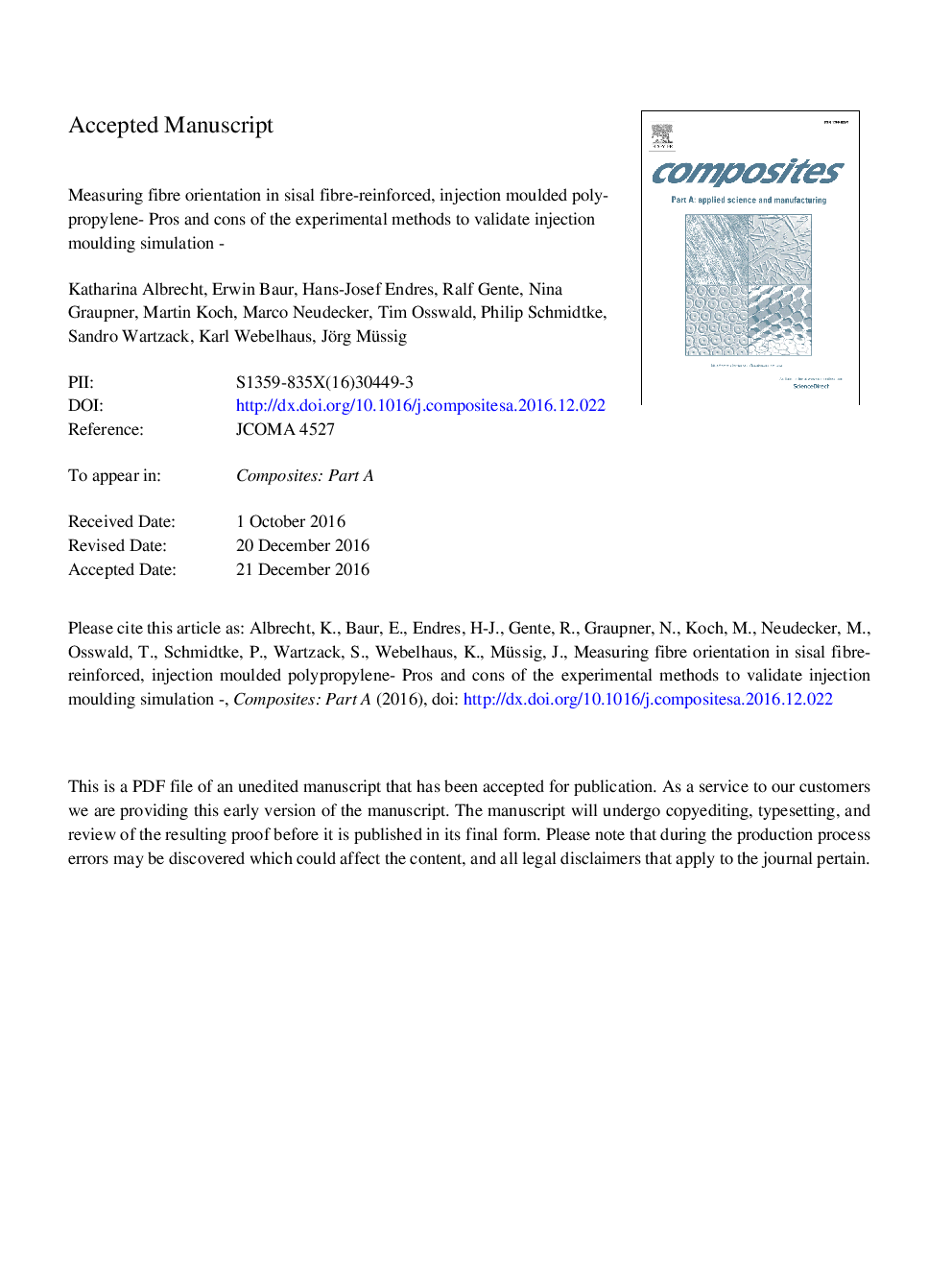| Article ID | Journal | Published Year | Pages | File Type |
|---|---|---|---|---|
| 5439747 | Composites Part A: Applied Science and Manufacturing | 2017 | 28 Pages |
Abstract
In commercial injection moulding simulation software only tools for glass fibre-reinforced thermoplastics exist, but not for natural fibres. In our research, we adapted a simulation software for sisal fibre-reinforced polypropylene. To evaluate our simulation results, three experimental methods, to measure fibre orientation are compared to each other using injection moulded sisal fibre-reinforced polymer parts: terahertz spectroscopy, μ-CT and light microscopy measurements (LMM) of microtome sections. Terahertz spectroscopy determines the main orientation over the plate thickness, but it neglects variances of fibre orientation across the plate thickness. Using μ-CT and LMM allows measuring fibre orientation at different layers across the plate thickness and to detect a shell-core effect. Care has to be taken comparing results from μ-CT and LMM, due to their differences in the slice thicknesses. The orientation found with the μ-CT correlates well with the injection moulding simulation developed for sisal fibre-reinforced polypropylene.
Related Topics
Physical Sciences and Engineering
Materials Science
Ceramics and Composites
Authors
Katharina Albrecht, Erwin Baur, Hans-Josef Endres, Ralf Gente, Nina Graupner, Martin Koch, Marco Neudecker, Tim Osswald, Philip Schmidtke, Sandro Wartzack, Karl Webelhaus, Jörg Müssig,
